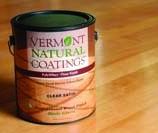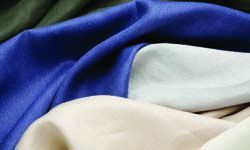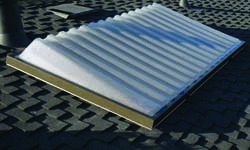
The Rainwater HOG Tank conserves water, a precious commodity in Florida.
Green Florida: Green and Cool
Green is no longer a trendy buzzword when it comes to home building and remodeling. It’s a concept that is reshaping our housing landscape today.
Still, even though people are more environmentally conscious today, they may not always know how to “go green,” says Jim Lucia of the Winter Park architectural firm Lucia, Kassik & Monday. Lucia has earned the Certified Green Professional (CGP) designation, which demonstrates his expertise in this burgeoning field.
“There are a number of ways for us to be green—nature’s way or technology’s way or a combination of both,” says Lucia. “Nature’s way takes into consideration everything that works with nature: the sun, the wind, the rain, the orientation of the home and whether the windows and doors are placed in a way to harness these natural attributes.”
Technology, Lucia says, includes energy-efficient windows, long-lasting efficient LED lighting, solar panels and other such products. “The best way to have a green home is probably a combination of both,” he says. “Use technology and nature for maximum effect.”
But where to start?
“If your primary motivation is saving money, look at your water and power usage,” says Guy Pearson of Safety Harbor Design & Build. “Look at your heating and air conditioning system.”
Green building, if well planned, need not cost any more than conventional construction, Pearson adds. But if there are extra upfront costs, they may be more than offset by the reduction in energy and water costs.
Plus, he says, now is a good time to upgrade to energy-efficient features because you can take advantage of local, state and federal tax credits and rebates.
Although water-conserving features such as toilets and bathroom fixtures are becoming more popular, it’s still energy efficiency that’s driving the move toward greener homes, experts say.
LED lighting and high-efficiency air conditioning and heating units are common upgrades in Tampa">Tampa Bay, says remodeler Doug King of West Coast Remodelers and Construction in Tampa">Tampa.
“Installing energy-efficient products in your home is like making an investment in your future,” King says. “You can save on utility bills every month and, in time, products such as a solar water heater will pay for itself.”
It’s possible to be green-conscious without breaking the bank, says remodeler Neal Fiske of TriplePoint Construction in St. Petersburg.
“Many old homes don’t have adequate insulation,” Fiske says, “and green remodeling can be as simple as adding insulation in the walls, ceiling and floors.”
Many local builders and remodelers are in agreement about this point: Homeowners who want to go green should start by adding extra insulation. But products with other environmentally sound features may peak your interest as well.
“When green products first started coming out, they were very expensive, but the products that are coming out right now—roof ?shingles, recycled carpet, wood floors—are coming down in price,” says Tampa">Tampa Bay builder Mike Bartoletta of Hannah Bartoletta Homes. “That means we now put them in as standard features.”
BuildingGreen LLC, publisher of Environmental Building News, prints an annual GreenSpec Directory, which lists more than 2,000 products that have passed a set of environmental criteria set by the editors.
Let’s take a look at some of the top green goods:
> Integrity Block. This compacted-earth block, which can be used in place of concrete, is made with pre-consumer recycled content and requires 40 percent less energy to manufacture, according to the Los Altos, Calif.-based company. Plus, it costs no more than standard concrete block. www.integrityblock.com
> PlybooPure Bamboo Flooring. Bamboo is a rapidly renewable grass, which makes it more environmentally friendly than many other flooring choices. But one of the complaints has been the use of formaldehyde in the manufacturing process. Now Smith & Fong is producing the first bamboo flooring to be certified by the Forestry Stewardship Council—and it’s made without formaldehyde. Also worth noting: The company says it uses no irrigation, pesticides or fertilizers to grow its bamboo. www.plyboo.com
 > Natura Paint. Most paints contain volatile organic compounds, which can have adverse health effects on a building’s occupants. Benjamin Moore’s new line of zero-VOC paints and primers is available in all of the manufacturer’s colors and a wide range of sheens. The company promises easy application and
outstanding durability. www.benjaminmoore.com ????
> Natura Paint. Most paints contain volatile organic compounds, which can have adverse health effects on a building’s occupants. Benjamin Moore’s new line of zero-VOC paints and primers is available in all of the manufacturer’s colors and a wide range of sheens. The company promises easy application and
outstanding durability. www.benjaminmoore.com ????
> PolyWhey Floor Finish. This wood flooring product by Vermont Natural Coatings is an environmentally smart alternative to traditional polyurethane. It’s a clear, durable topcoat seal that uses recycled whey protein—a by-product of cheese making—as a bonding agent. It’s available in semi-gloss and satin finishes. www.vermontnaturalcoatings.com
 > Ecotextiles Natural-Fiber Fabrics. The fabric collection from Seattle-based O Ecotextiles is made from 100 percent organic cotton or other sustainably grown fibers such as hemp, silk and bamboo. The company, founded by two sisters, says its mission is to produce luxurious fabrics in ways that are nontoxic, ethical and sustainable. Manufacturing processes, too, are more environmentally friendly than for typical textiles, and the final products contain no toxic chemical residues. www.oecotextiles.com
> Ecotextiles Natural-Fiber Fabrics. The fabric collection from Seattle-based O Ecotextiles is made from 100 percent organic cotton or other sustainably grown fibers such as hemp, silk and bamboo. The company, founded by two sisters, says its mission is to produce luxurious fabrics in ways that are nontoxic, ethical and sustainable. Manufacturing processes, too, are more environmentally friendly than for typical textiles, and the final products contain no toxic chemical residues. www.oecotextiles.com
> Matrix Total Home System. NTI’s Matrix incorporates a condensing water heater, furnace and boiler and heat recovery ventilator—which is pre-configured for air conditioning—into a single unit. The family-owned Canadian company, which manufactures hydronic heating equipment and furnaces, says the Matrix system is 60 percent more efficient in heat recovery and 30 percent more efficient in water heating than a conventional natural gas furnace and water heater. www.nythermal.com
 > SunCache Solar Water Heating System. The SunCache integral-collector-storage solar water heater from Harpiris Energy uses a roof-mounted polyethylene panel and copper heat exchanger to preheat water. The low-cost, passive system captures heat in 50 gallons of non-circulating water stored in the unpressurized rooftop panel. SunCache is affordable and easy to install, although it’s only intended for use in warm climates. www.harpiris.com
> SunCache Solar Water Heating System. The SunCache integral-collector-storage solar water heater from Harpiris Energy uses a roof-mounted polyethylene panel and copper heat exchanger to preheat water. The low-cost, passive system captures heat in 50 gallons of non-circulating water stored in the unpressurized rooftop panel. SunCache is affordable and easy to install, although it’s only intended for use in warm climates. www.harpiris.com
 > Rainwater HOG Tank. Water is becoming an ever-more precious commodity in Florida. So here’s a convenient modular rainwater storage tank that holds nearly 50 gallons of water that can be used for irrigation, toilets, gardening or laundry. The tank can be installed horizontally or vertically, making it perfect for tight spaces. The Australian company, which has an office in Corte Madera, Calif., says the modules can be placed in your home, fixed to the side of a structure or set under a deck or along a fence. www.rainwaterhogcom
> Rainwater HOG Tank. Water is becoming an ever-more precious commodity in Florida. So here’s a convenient modular rainwater storage tank that holds nearly 50 gallons of water that can be used for irrigation, toilets, gardening or laundry. The tank can be installed horizontally or vertically, making it perfect for tight spaces. The Australian company, which has an office in Corte Madera, Calif., says the modules can be placed in your home, fixed to the side of a structure or set under a deck or along a fence. www.rainwaterhogcom
